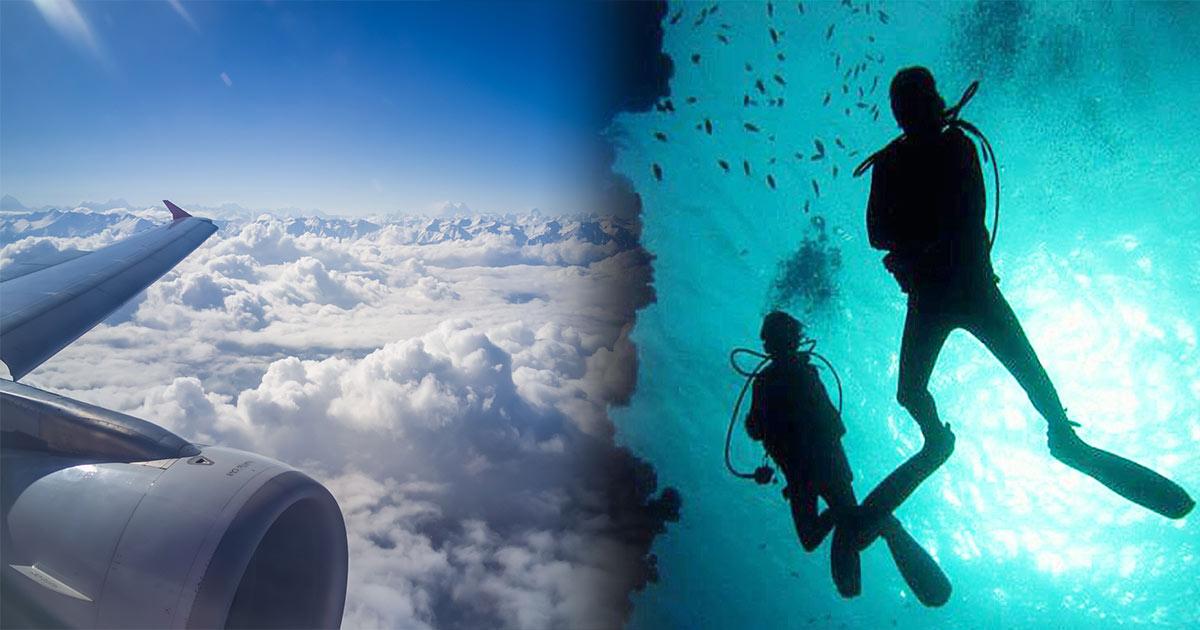
Not only is scuba diving a safe activity, it’s actually good for you. Once seen as an extreme sport, it is now enjoyed by young & old all around the world. However, there are a few potential health risks for those who don’t practise safe diving or have pre-existing conditions. The most-common and most-talked-about scuba diving injury is Decompression Sickness, which is also called DCS or The Bends. The scientific cause of DCS is too much nitrogen in the body’s tissues. The diver’s blood-nitrogen level increases when diving at depth, and it needs time to be released slowly. The release of nitrogen is initially done by ascending to the surface slowly at the end of each dive. But after diving it’s important that the diver does not go into an area of low pressure, such as up a mountain or fly in an aircraft. Scuba diving after flying is ok, but not flying after diving. Other causes of DCS can be pre-existing conditions in the diver, as well as dehydration. Therefore, divers need to complete and sign a medical document before learning to scuba dive, and they need to always drink plenty of water before and after each dive.
Considerations to ensure safe scuba diving
- Risks of scuba diving
- Diving after flying
- Flying after diving
- How to avoid risks
Risks of Scuba Diving
In the 21st century, scuba diving is no longer considered an extreme sport. It’s possible for children and elderly people to enjoy, and it’s actually good for you. However like any physical activity, there are a few risks to consider and avoid. These include risks based purely on the practise of diving as well as external risks.
Risks of diving without external factors are very limited, and every dive and piece of equipment is designed to maximise safety. People who have never dived normally believe that running out of air is the biggest danger for scuba divers, but this is not true. It’s almost unheard of for a diver to run out of air, simply because divers are trained to monitor their remaining air, they dive in pairs or groups, and towards the end of each dive (in shallower water) the air lasts longer than it does at depth. The two main risks of scuba diving are Decompression Sickness and Lung Overexpansion Injury. However, both are very rare because all certified divers are taught how to dive safely to avoid injury or incident.
Decompression Sickness (DCS)
Decompression Sickness (DCS) is a dangerous injury that can be fatal in extreme cases. It is caused by too much nitrogen in the blood that escapes into the body’s tissues. When you breathe compressed air deep underwater your body absorbs more nitrogen than normal. This does not happen in shallow water, and does not affect snorkellers because they are not breathing compressed air. If you don’t give your body enough time and opportunity to release the nitrogen and return to normal levels, then the nitrogen can become saturated in your body’s tissues. This is most commonly in joints, which become painful.
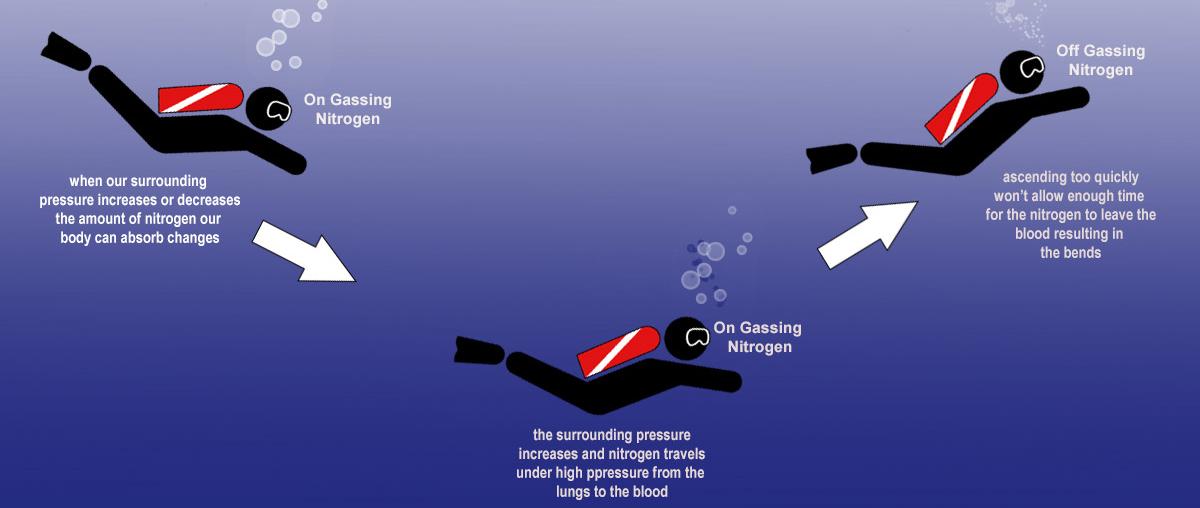
Safe diving to avoid DCS is easily achieved in three main ways.
- Not staying at depths greater than 10 metres for too long. Because breathing compressed air at depth is what causes the build-up of too much nitrogen in your bloodstream.
- Finish the dive by ascending slowly to the surface, and performing a safety stop. As you dive shallower and continue breathing normally, you ‘off gas’ which means the excess nitrogen is released every time you exhale. Breathing in shallow water is the best way to avoid DCS. A safety stop is when the diver remains at a depth of 5 metres for 3+ minutes. The sole reason for safety stops is to avoid DCS.
- Post-dive activities must not include going to altitude or areas of low pressure. Flying soon after scuba diving is dangerous. If there is any excess nitrogen in your blood system, going into an area of low pressure will allow the nitrogen to escape into your tissues or joints. Lower-pressure areas are most-commonly flying aircraft, but they also include mountains.
Lung Overexpansion Injury
Lung Overexpansion Injury is another very-avoidable potential risk of diving. Divers are taught never to hold their breath while diving. The reason for this is that in the extreme case of a diver holding his or her breath and then ascending to shallower water, the lungs will expand to dangerous levels. This is because the high pressure at depth compresses any space of air to be smaller than normal. And when that air space moves into lower pressure it will expand. Therefore, it’s vital to breathe normally at all times when scuba diving to avoid this very rare but equally dangerous situation.
External Risks of Diving
 External Risks of DivingExternal Risks of Diving vary depending on the situation and location. Although many people may believe shark attacks are common, this is absolutely untrue. Sharks and almost every other creature in the water have no interest in humans, especially scuba divers. Nearly all creatures in the sea are very aware divers are around and they have defence plans. Plus, unlike animals on land, in the sea most creatures (such as fish, snakes, and invertebrates) can escape in any direction, because gravity isn't pulling them down. The few external risks of scuba diving include cuts & abrasions from non-living things, and stings & bites from creatures trying to defend themselves.
External Risks of DivingExternal Risks of Diving vary depending on the situation and location. Although many people may believe shark attacks are common, this is absolutely untrue. Sharks and almost every other creature in the water have no interest in humans, especially scuba divers. Nearly all creatures in the sea are very aware divers are around and they have defence plans. Plus, unlike animals on land, in the sea most creatures (such as fish, snakes, and invertebrates) can escape in any direction, because gravity isn't pulling them down. The few external risks of scuba diving include cuts & abrasions from non-living things, and stings & bites from creatures trying to defend themselves.
Cuts and abrasions
Cuts and abrasions can be caused from the diver touching or scraping body parts on the coral reef or sharp edges of a wreck or debris. There are very extreme cases of boat propellers injuring or even killing scuba divers, but these situations should never happen if the diver (and his/her instructor) is paying attention. Cuts and abrasions should also not happen because every diver should be aware of what’s around them, and they are taught to control their buoyancy and avoid contact with the reef or other items.
Stings and bites from creatures
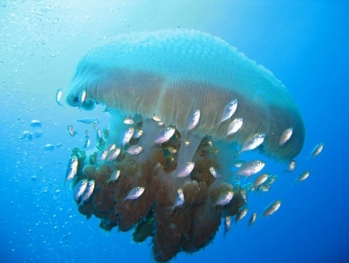 Jellyfish can be a risk to diversStings and bites from creatures in the water are also rare because most animals in the sea are aware of humans and they can swim away or hide. However, jellyfish, anemones, and fire coral don't have brains and therefore can't make these decisions. And a few species of fish can hurt divers. In nearly every case, it’s the diver's fault. But incidences with jellyfish may be impossible for the diver to avoid. The infamous Titan Triggerfish (Balistoides viridescens) is known to attack anyone or anything to defend their breeding ground. But sometimes divers who don’t listen to a pre-dive briefing may find out the hard way. But please don't vilify the Titan Triggerfish, as it's normally a very placid and approachable fish.
Jellyfish can be a risk to diversStings and bites from creatures in the water are also rare because most animals in the sea are aware of humans and they can swim away or hide. However, jellyfish, anemones, and fire coral don't have brains and therefore can't make these decisions. And a few species of fish can hurt divers. In nearly every case, it’s the diver's fault. But incidences with jellyfish may be impossible for the diver to avoid. The infamous Titan Triggerfish (Balistoides viridescens) is known to attack anyone or anything to defend their breeding ground. But sometimes divers who don’t listen to a pre-dive briefing may find out the hard way. But please don't vilify the Titan Triggerfish, as it's normally a very placid and approachable fish.
Diving After Flying
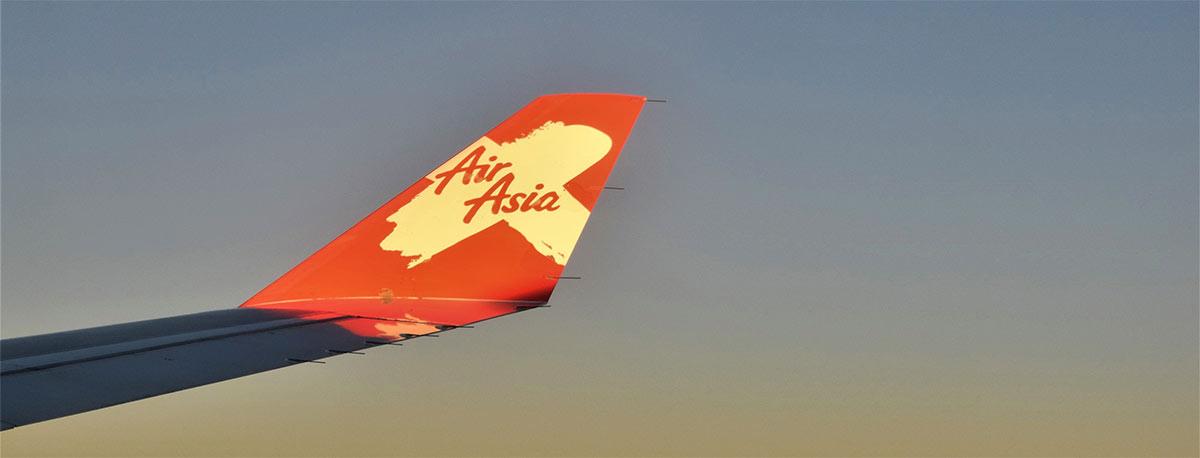
Scuba diving immediately after being at altitude or in another low pressure environment is fine. Other than you being more tired or dehydrated than normal, there are no effects on your body if you go directly from an aircraft or mountain into deep water. In fact, many of our guests land at Phuket Airport and go directly to one of our Similan Islands diving boats. This is more common in the afternoon for evening departures, and the guests don’t dive until the following morning anyway. However, we also have guests who are on a tight schedule and they land at 3.00-5.00am at Phuket Airport, then travel directly to Khao Lak to board a speedboat that takes them out to one of our flexible platform Similan liveaboards and they’re diving by 10.30am. By doing this, they don’t waste time or money staying in a hotel, and they can be in the water as soon as possible. There are no known health risks or other dangers contributed to diving after flying. It’s the other way around that must be avoided.
Flying After Diving
Why is flying after diving dangerous?
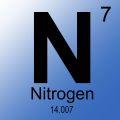 Flying after diving is dangerous because it can trigger DCS, a condition that is expensive to treat and can sometimes be fatal. DCS (Decompression Sickness / The Bends) is the most-common, but easily avoidable, scuba diving injury. As already mentioned on this page, divers increase the level of nitrogen in their blood system. This is especially so after multiple dives. And the deeper you go to and the longer you stay deep, the more nitrogen you will build up. Flying in an aircraft is similar to climbing a mountain. You enter an area of low pressure. If you have not completely released all the excess nitrogen from your blood system, entering a low pressure environment may give any remaining ‘bubbles of nitrogen’ in your body the opportunity to escape into tissue. This can cause pain, restricted movement, and in extreme cases it can be fatal.
Flying after diving is dangerous because it can trigger DCS, a condition that is expensive to treat and can sometimes be fatal. DCS (Decompression Sickness / The Bends) is the most-common, but easily avoidable, scuba diving injury. As already mentioned on this page, divers increase the level of nitrogen in their blood system. This is especially so after multiple dives. And the deeper you go to and the longer you stay deep, the more nitrogen you will build up. Flying in an aircraft is similar to climbing a mountain. You enter an area of low pressure. If you have not completely released all the excess nitrogen from your blood system, entering a low pressure environment may give any remaining ‘bubbles of nitrogen’ in your body the opportunity to escape into tissue. This can cause pain, restricted movement, and in extreme cases it can be fatal.
How long do I have to wait to fly after diving?
 How long you need to wait after diving before flying in a plane varies on several factors. But a safe period is 24 hours. If you have only dived once or twice and not deeper than 18 metres, then it’s usually safe to fly just 12 hours after the end of your final dive. But this is just a guideline minimum. If you have dived on a liveaboard trip 6 ore more times over a period of days, then you need more time to ‘off gas.’ It is better to wait minimum 18 hours, but 24 hours is the industry standard. After 6-10 dives, it is probably safe to fly 18 hours later, but 10+ dives usually needs the full 24 hours to be sure.
How long you need to wait after diving before flying in a plane varies on several factors. But a safe period is 24 hours. If you have only dived once or twice and not deeper than 18 metres, then it’s usually safe to fly just 12 hours after the end of your final dive. But this is just a guideline minimum. If you have dived on a liveaboard trip 6 ore more times over a period of days, then you need more time to ‘off gas.’ It is better to wait minimum 18 hours, but 24 hours is the industry standard. After 6-10 dives, it is probably safe to fly 18 hours later, but 10+ dives usually needs the full 24 hours to be sure.
What happens to my body during the ‘no fly time’?
 As soon as you are in shallow water or at the surface, your body is already ‘off gassing,’ and every breath you take increases oxygen and decreases nitrogen in your bloodstream. Provided that you don’t return to depth, the process is natural and you don’t need to do anything special. Getting rest and staying relatively active will help the process. All you have to do is wait, and breathe air normally.
As soon as you are in shallow water or at the surface, your body is already ‘off gassing,’ and every breath you take increases oxygen and decreases nitrogen in your bloodstream. Provided that you don’t return to depth, the process is natural and you don’t need to do anything special. Getting rest and staying relatively active will help the process. All you have to do is wait, and breathe air normally.
Does the length of the flight make any difference?
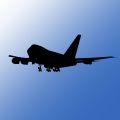 All planes have pressurised cabins, but the cabins are not pressurised to the same degree that we experience at sea level. Therefore, even if your flight is short and maybe the aircraft doesn’t reach the same altitude of a long-haul flight, you are still giving the body the opportunity to release any excess nitrogen. Of course, longer flights will put the body at more risk of any nitrogen escaping into the body tissues.
All planes have pressurised cabins, but the cabins are not pressurised to the same degree that we experience at sea level. Therefore, even if your flight is short and maybe the aircraft doesn’t reach the same altitude of a long-haul flight, you are still giving the body the opportunity to release any excess nitrogen. Of course, longer flights will put the body at more risk of any nitrogen escaping into the body tissues.
How to Avoid Risks
There are several easy steps that divers can take to avoid risks of scuba diving related injuries. Scuba diving is a very safe activity, but accidents and incidents do happen. Before, during and after each scuba dive you can easily minimise any risks. These include how you prepare and take care of your body & the diving equipment, plus how you behave while in the water. And finally what activities to avoid for 24 hours after any scuba dive.
What to do before each dive to avoid risks
- Stay hydrated by drinking water
- Get plenty of rest
- Ensure dive equipment is ok
- Don't drink alcohol
Before each scuba dive, it’s important that your body and your diving equipment is well prepared. In most cases, the diving equipment is prepared by the crew or diving staff, and you just need to do a final ‘buddy’ check. But if you have your own equipment, you need to make sure it’s properly maintained and assembled. Equipment malfunction can normally be dealt with immediately before a dive or sometimes while underwater. But how you prepare your body is also very important. The most-important preparation for scuba divers is to drink plenty of water and get sufficient rest. Drinking water or other non-alcoholic beverages prevents dehydration. And dehydration is a factor that can increase the chances of DCS. Being tired or stressed are also contributing factors, so getting plenty of rest before and between dives is important. Although we already mentioned that travelling directly from a plane to the boat is safe, it’s important to be rested and hydrated. Therefore, a long-haul flight to a hot country such as Thailand may involve passengers drinking alcohol on the flight or soon after landing. The tiredness from jet-lag & traveling in general, and alcohol causing dehydration are factors to consider before scuba diving. You don’t have to have a good night’s sleep and abstain from drinking any alcohol at all, but it’s good to be aware of your tiredness levels and to avoid dehydration.
What to do during each dive to avoid risks
- Follow your guide
- Pay attention to your dive computer
- Do a safety stop every dive
During your dives you or your Divemaster guide will monitor your ‘dive profile.’ The dive profile is how deep you are and how long you have been at a particular depth. In an ideal scuba dive, the divers descend to the maximum planned depth as soon as convenient, comfortable or possible. Then after staying at the maximum planned depth for a period of time, the divers ascend to the surface slowly. It’s common to stop at a depth of 5 metres and wait there for 3-5 minutes. This is called a ‘safety stop.’ Diving like this is the safest way to avoid DCS. In the past, most divers used pressure gauges and pre-planned graphs to ensure that the profile is followed. But nowadays most divers use dive computers (often combined as a wristwatch) that will more accurately assess every moment of the dive. Paying attention to the dive computer and following its simple instructions will ensure the maximum risk avoidance, especially for DCS. Divers don’t need to do anything other than regularly check the information on the dive computer and act accordingly. The dive computer will show the diver how much longer it is safe to remain at the current depth. In addition it will automatically calculate the safety stop for you. If you ascend too quickly or stay deep for too long, the dive computer will normally sound an audible alarm to attract your attention.
What to do after each dive to avoid risks
- Avoid flying or ascending high peaks
- Get suficient rest, but stay active too
- Drink plenty of water
After each scuba dive the most important thing is not to fly in an aircraft or climb a mountain. Normally the period of not going to altitude is 24 hours after the end of the dive, but this can vary depending on how many dives you have completed over how many days. Going into an environment of low pressure can enable any excess nitrogen to become saturated from your bloodstream into the body tissue.
Continuing to get plenty of rest, but being active as well, and drinking plenty of fluids can only help your body to recover. However, there is not much scientific research to assess a diver’s general behaviour after diving.
Summary
So, now you know that diving after flying is safe, and that scuba diving is a safe & healthy activity, what are you waiting for? In Thailand we have Similian Island liveaboard & day trips departing every day from the middle of October to the middle of May. And during the ‘green season’ we have boats that leave several times per week to dive sites around Phuket. Search our pages or get in touch to find the best trip for you.

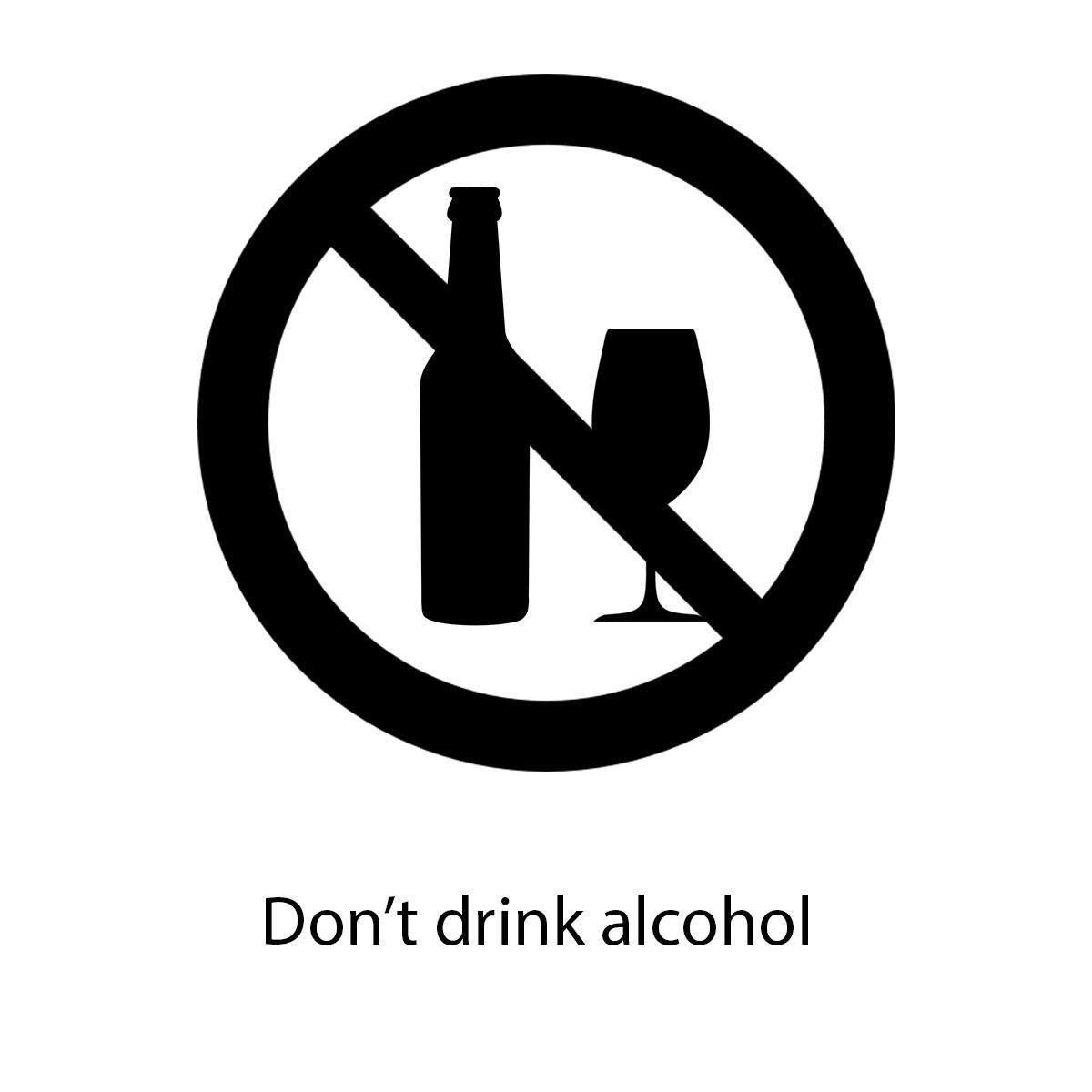
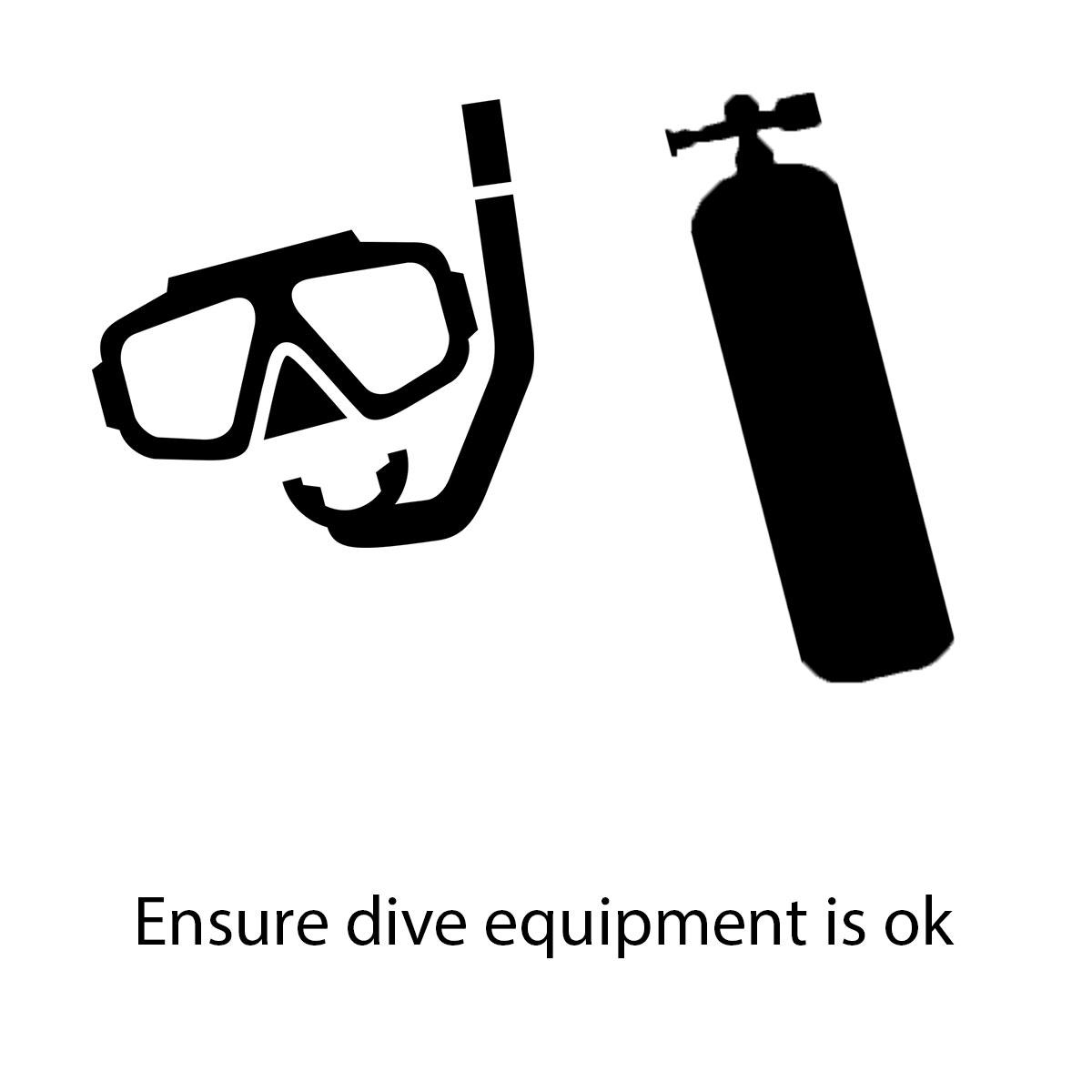
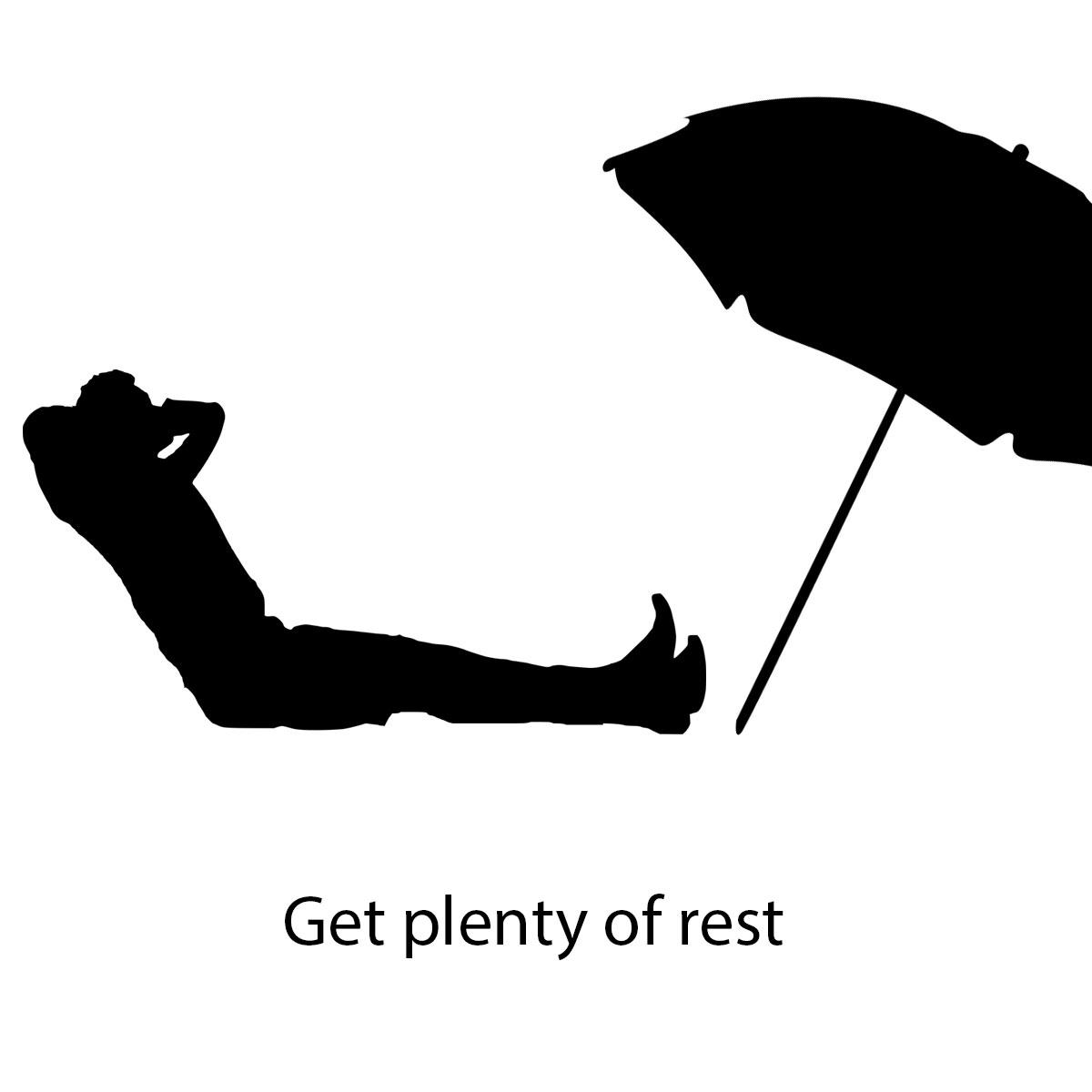
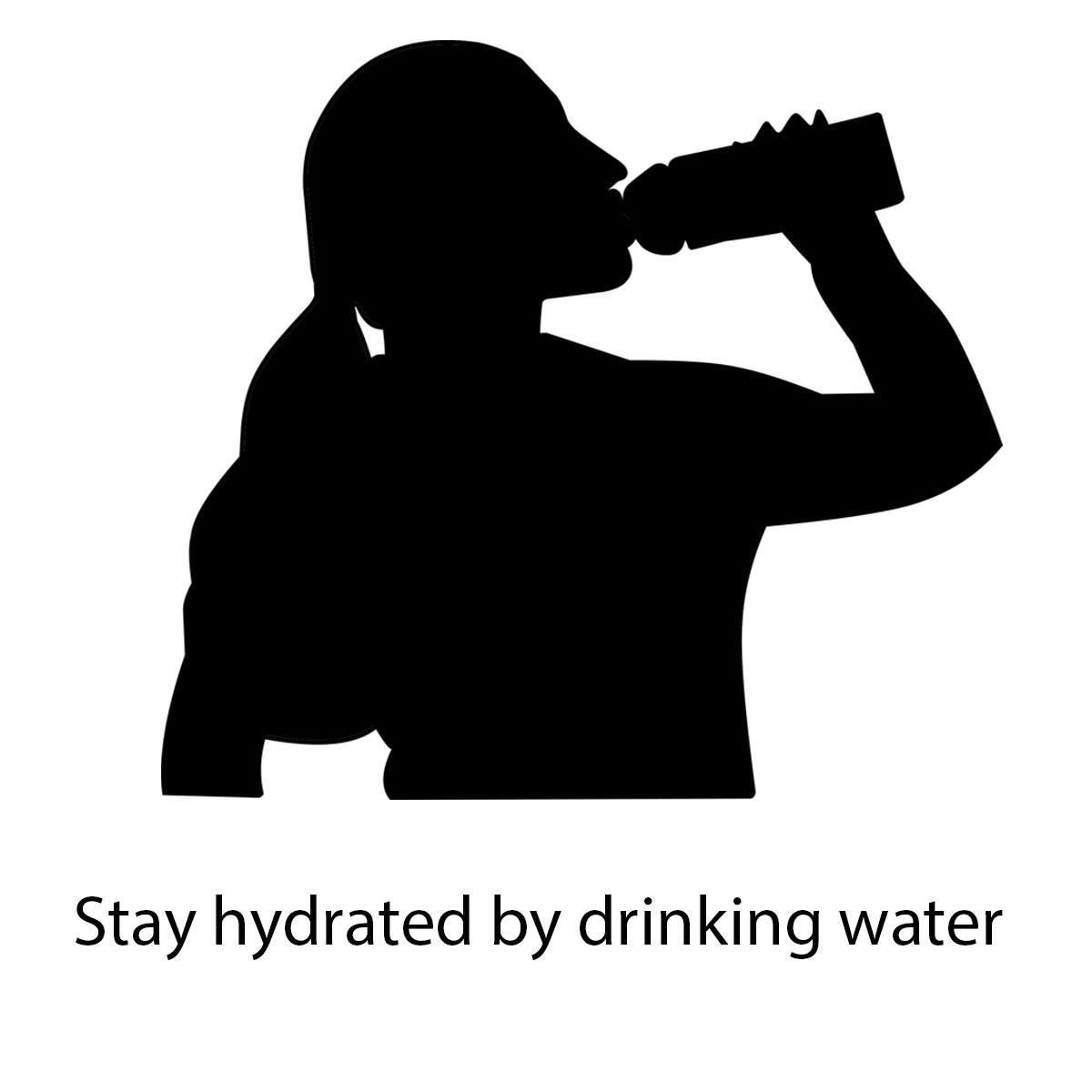




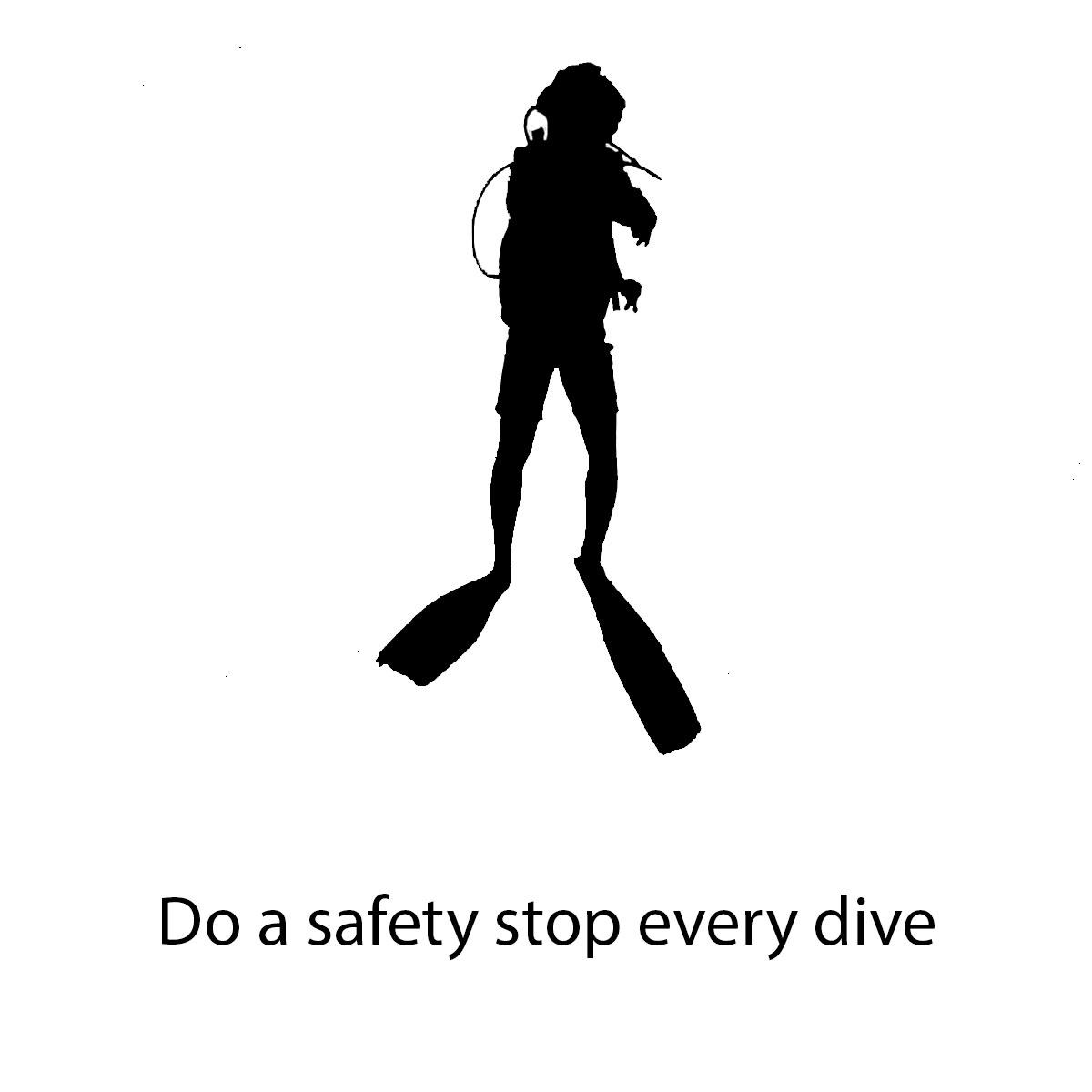
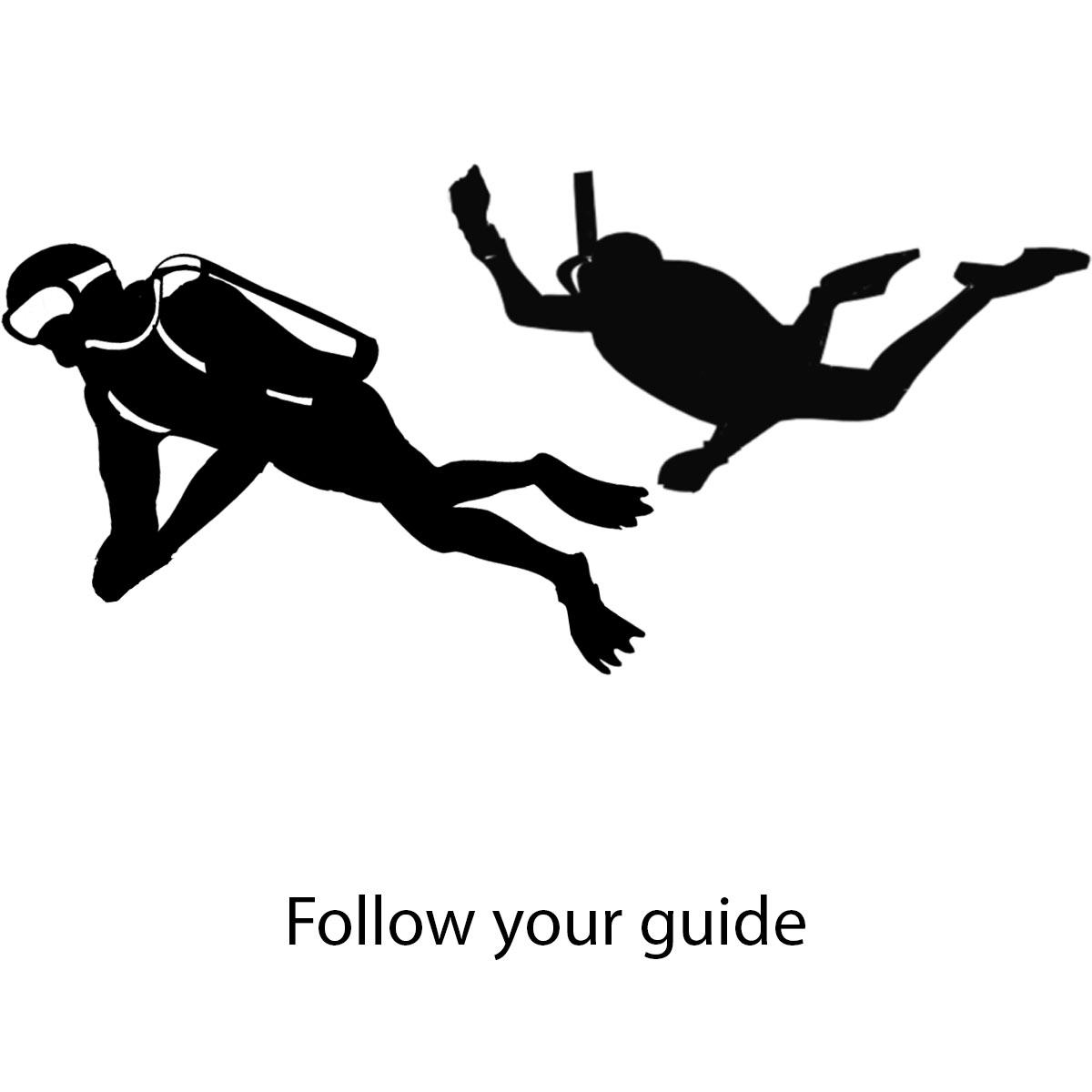
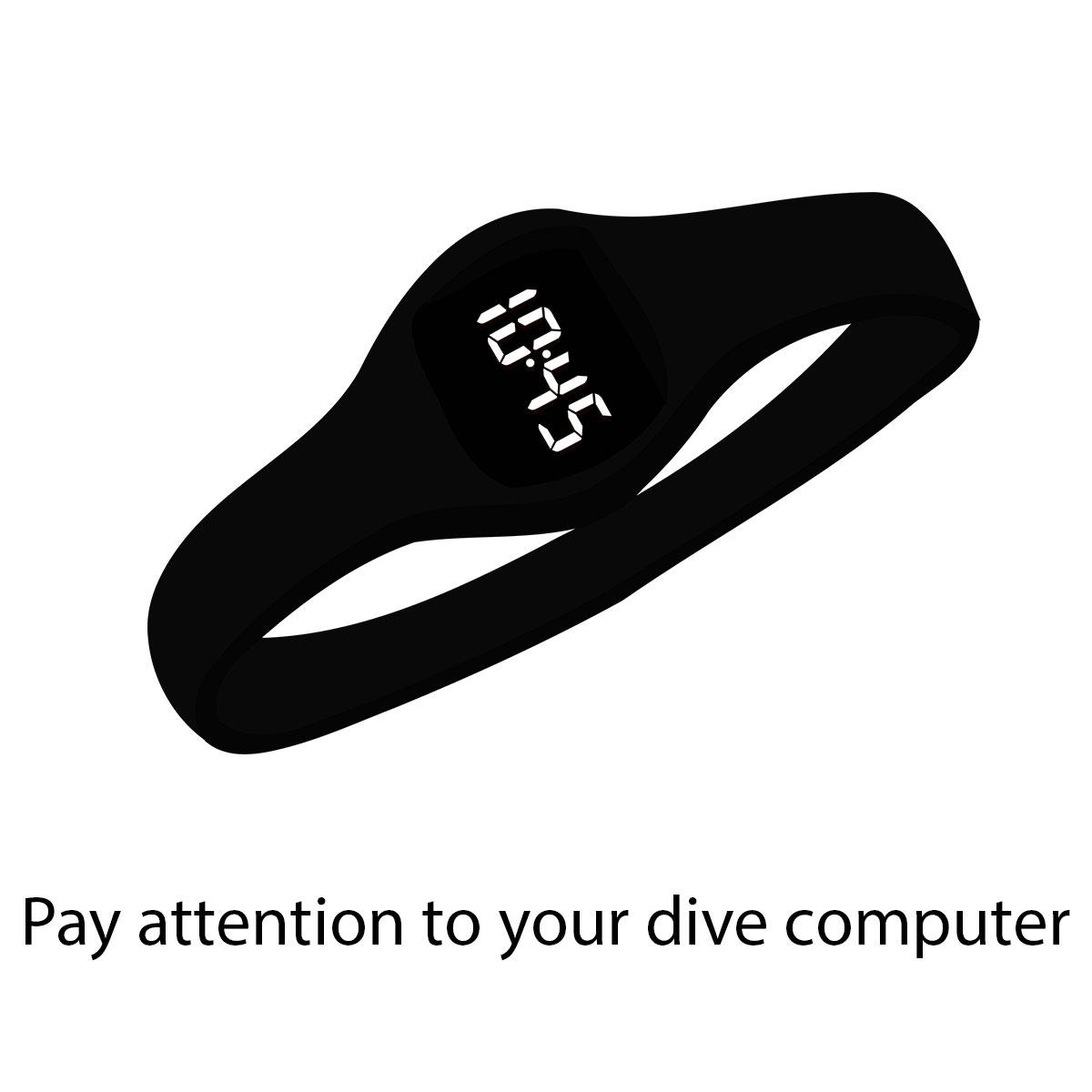
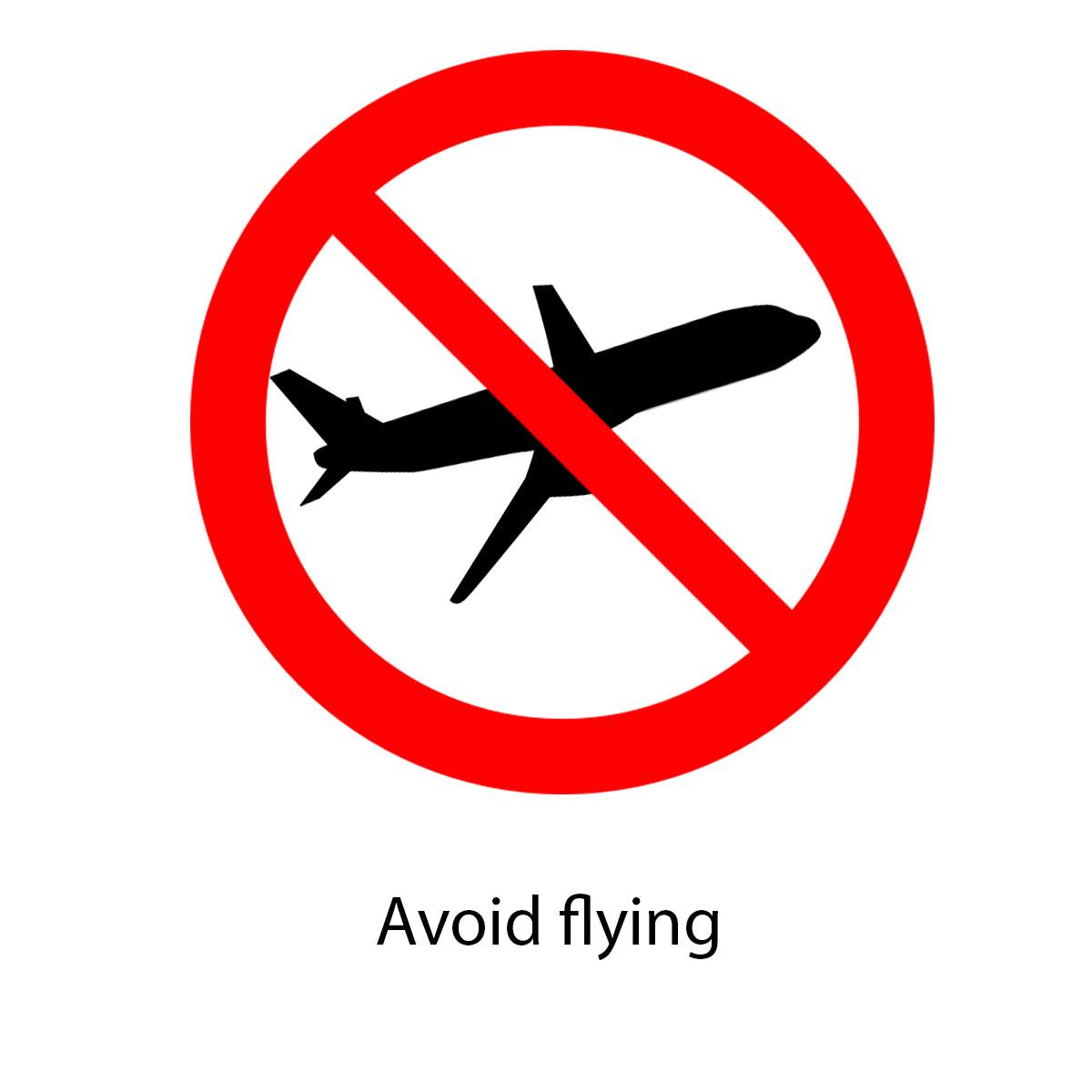



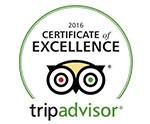
Comments